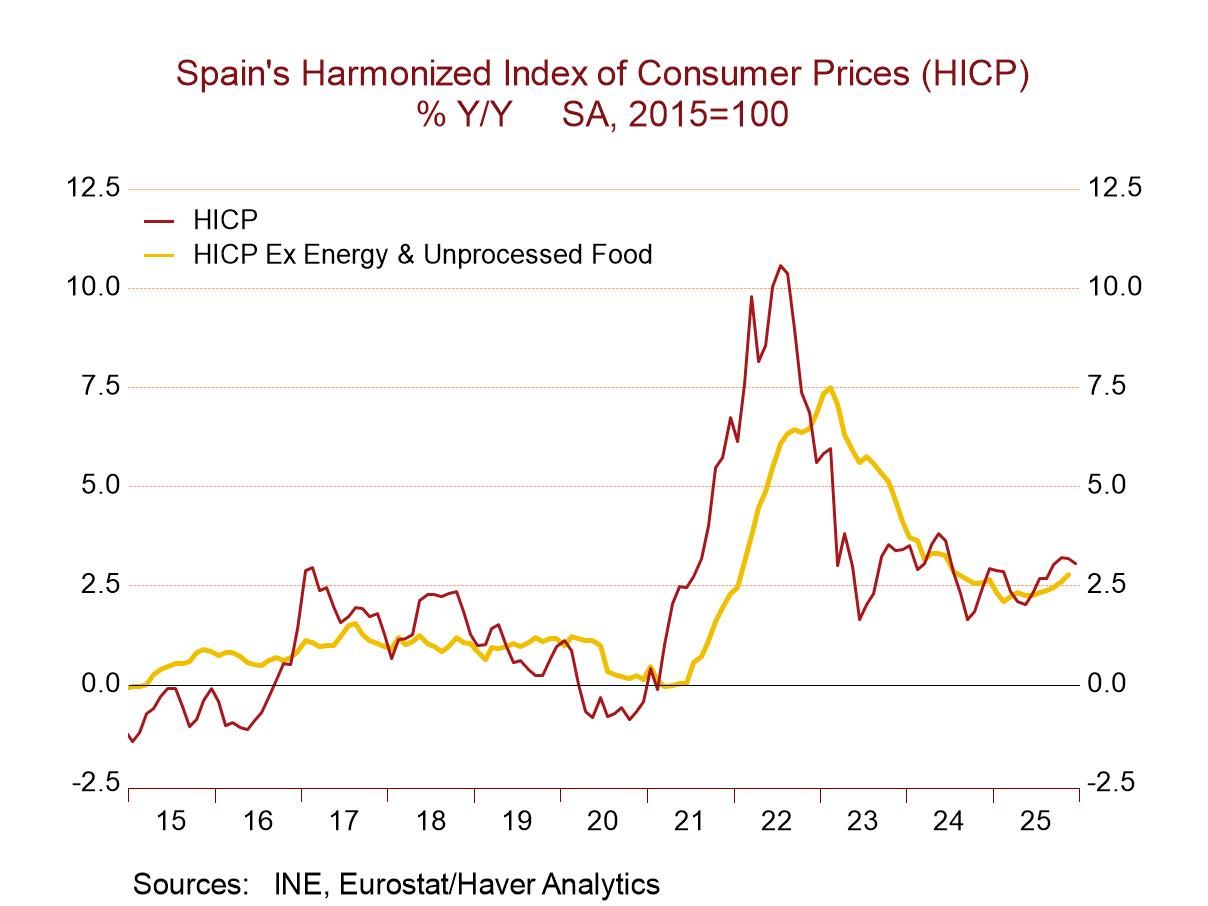 Global| Feb 07 2024
Global| Feb 07 2024Charts of the Week: Production versus Consumption
by:Andrew Cates
|in:Economy in Brief
Summary
Last week's surprisingly strong US employment report has diminished investors’ expectations that central banks would quickly shift to more relaxed monetary policies. And this has caused bond yields to spike sharply higher in recent days. Nonetheless, equity market sentiment across most major economies has remained resilient, buoyed by a consistent flow of positive corporate earnings news. In our charts this week, we examine the extent of monetary policy relaxation that’s anticipated by the consensus for the world's leading central banks (chart 1). Given that recent and expected disinflation trends are crucial to these forecasts, we also assess how recent US survey data align with a projected decline in inflation in coming months (chart 2). We then turn our attention to ongoing tensions in the Middle East and disruptions in Red Sea shipping lanes, offering insights into supply chain challenges and global shipping costs (chart 3). Surprisingly positive news regarding the global economy is a further takeaway from our analysis of investor sentiment and, to a lesser extent, Germany's factory orders (charts 4 and 5). This contrasts, however, with unexpectedly weak retail spending reports this week, including from Australia (chart 6).
Consensus forecasts for policy rates Most major central banks are anticipated to adopt significantly more relaxed monetary policies in the coming 12 months. An analysis of the difference between the Blue Chip consensus forecasts for policy rates 12 months ahead versus 3 months ahead indicates an expectation for over 100 basis points (bps) of cumulative easing in both the US and Canada, and more than 75 bps of easing in the UK and euro area. In stark contrast, the Bank of Japan is expected to tighten monetary policy, with cumulative rate increases of approximately 10 bps forecasted over the next 12 months.
Chart 1: Blue Chip Financial Forecasts: Projected policy rates in 12 months versus 3 months

US capacity pressures and underlying inflation Leading indicators of inflation – such as the capacity gauges in the US ISM surveys (both manufacturing and non-manufacturing) continue to suggest that underlying price pressures in the economy should continue to fade in the immediate months ahead. That’s the message from chart 2 below showing the supplier delivery times and order backlog gauges in both surveys (advanced by 8 months) and the New York Fed’s underlying inflation gauge.
Chart 2: US ISM Survey Capacity Indicators versus underlying inflation

Global supply chain pressures and shipping costs That said, suppliers’ delivery times have slowed and global shipping costs have climbed in recent weeks presumably, in part, due to instability in the Middle East and the disruption of Red Sea shipping routes in particular. Nevertheless, as chart 3 also suggests, overall global supply chain pressures still appear muted according to January’s data for the New York Fed’s global supply chain pressure index.
Chart 3: Global Supply Chain Pressure Index versus the Baltic Dry Index

The global business cycle On a brighter note, January’s purchasing managers surveys as well as February’s global sentix surveys suggest that activity in the world economy has been perking up. The latter more specifically revealed solid improvements in forward looking expectations components to multi-month highs, improvements that were broadly based across the major regions. That said, Asian economies (excluding China) have mostly spearheaded this revival. At the sectoral level - and with that revival in Asia in mind- the recent pick up in semiconductor sales has been noteworthy too.
Chart 4: Global Sentix survey: Expectations index versus global semiconductor sales

Germany’s factory orders Against this global backdrop the recent pick up in German factory orders has been noteworthy too. Manufacturing orders specifically climbed by 8.9% m/m in December, much stronger than analysts had expected. However, underlying weakness was still lurking in the details. Much of the strength in December can be attributed to one-off orders in the transportation sector. When major items are removed, factory orders actually fell by 2.2% m/m in December, their fourth consecutive monthly retreat (chart 5).
Chart 5: Germany’s manufacturing orders

Australia’s consumers On a final note, this week’s retail sales and household spending data from the likes of Japan, the euro area and Australia were all weaker than expected. In Australia more specifically the value of retail spending fell by 2.7% m/m in December, the biggest monthly decline since August 2020.
Chart 6: Australia’s retail trade

Andrew Cates
AuthorMore in Author Profile »Andy Cates joined Haver Analytics as a Senior Economist in 2020. Andy has more than 25 years of experience forecasting the global economic outlook and in assessing the implications for policy settings and financial markets. He has held various senior positions in London in a number of Investment Banks including as Head of Developed Markets Economics at Nomura and as Chief Eurozone Economist at RBS. These followed a spell of 21 years as Senior International Economist at UBS, 5 of which were spent in Singapore. Prior to his time in financial services Andy was a UK economist at HM Treasury in London holding positions in the domestic forecasting and macroeconomic modelling units. He has a BA in Economics from the University of York and an MSc in Economics and Econometrics from the University of Southampton.






